(Kudos is due again to Rev. James M. Leonard)
Sever Juan Voicu published recently in the journal Apocrypha an extensive article concerning the apocryphal traditions in the Encomium on the 12 Apostles ascribed to Severian of Gabala.[1] This text is known in one complete Coptic parchment manuscript (its leaves are shared by the Pierpont Morgan Library in New York, the Michigan University Library and the Coptic Museum in Cairo), as well as in two Arabic paper codices (one is in the Vatican Library, and the other in the Coptic Museum, Cairo). The Coptic text was edited in 1993 by Michael E. Foat in a collective volume,[2] and re-edited more recently, together with the Arabic witnesses, by Davide Righi.[3]
The aims of this post are modest. First of all, I will briefly introduce the encomium on the apostles to the general reader. Secondly, I will show that the Pierpont Morgan codex is not the only Coptic witness of this text. Another surviving manuscript was brought to light during my research on the collections of Coptic manuscripts. This codex belonged to the White Monastery and its leaves were dismembered and scattered among different libraries and museums around the world. Finally, I will argue that the new Coptic witness of the Encomium on the 12 Apostles can be dated around the year 1000 AD.
The Encomium on the 12 Apostles by Pseudo-Severian of Gabala
Although the extant manuscripts attribute the encomium to Severian, the bishop of Gabala, the document is actually a pseudonymous work. But why was the text attributed to Severian? As there is no clear connection between his surviving works and the Encomium on the 12 Apostles, I think the text was put under his name simply because Severian’s Christology was traditionally associated with that of other orthodox Fathers of the Coptic Church. Severian passed as an orthodox theologian in the Christological debates of the 5th century, and both Cyril of Alexandria and Severus of Antioch invoked his authority in their writings (although Cyril was not aware that De incarnatione et contra Arianos, which he ascribes to Severian in De recta fide ad dominas, was in fact written by Marcellus of Ancyra). Thus, I am inclined to believe that the Coptic author had no specific reason for attributing his text to Severian, but that he relied on the authority of the Fathers, who considered that the Christology of the bishop of Gabala was orthodox.
Sever Voicu describes the encomium on the apostles in the following way:
The Grundschrift of the Encomium in XII apostolos (CPG 4281) was composed in Sahidic perhaps in the 8th century and falsely attributed to a Greek author: Severian of Gabala (ca 400). It is now lost, since its three known witnesses (one Coptic and two Arabic MSS) have heavily rewritten it. The Encomium resorts often to traditions about the apostles which are either unknown or were circulated only in Coptic (sometimes, also in Arabic and Ethiopic), such as the lists of the apostles’ parents, jobs, mission fields, martyrdoms, a comparison between the apostles and the twelve stones of the highpriest’s breastplate, a new version of Mark’s martyrdom with archaic features, etc.
A New Manuscript Witness
Until now, the only Coptic witness of the encomium on the apostles attributed to Severian of Gabala was thought to be a Sahidic manuscript which came from the Monastery of the Archangel Michael, situated near Hamouli, in the Fayyum oasis. The bulk of this codex is kept today in the Pierpont Morgan Library, New York (call number M606).[4] Seven leaves of the Morgan manuscript are wanting, but luckily they were found in Ann Arbor (Michigan University Library) and Cairo (Coptic Museum).
During my research on Coptic manuscripts, I found the remains of an unknown parchment codex which contain the text of Pseudo-Severian’s encomium. The three fragments I identified belong to the same manuscript, and survived dismembered from their ancient binding. The original provenance of the fragments is the library of the White Monastery, near Sohag.
1) The first identified fragment is a single parchment folio kept today in the Vatican Library as Borgia copto 109, cassette XXV, fascicolo 124. The pagination of the fragment is today lost, but Georg Zoega gives in his catalogue as certain the page numbers 35-36.[5] The leaf was edited with a Latin translation by Agostino Antonio Georgi in 1793.[6] Almost one hundred years later, Ignazio Guidi published a series of corrections to Georgi’s edition.[7]
2) To the same manuscript as the Borgia leaf belongs a fragment which ended up in the National Library in Paris. It currently bears the call number BnF Copte 1615, fol. 35. I am not certain when this fragment was integrated into the Paris collection, but I suspect that it was donated to the National Library with the entire lot BnF Copte 1615 by the papyrologist and collector Seymour de Ricci.
 3) Finally, the third fragment is badly damaged and less than half a folio has survived. It is kept in the Coptic Museum in Cairo. Unfortunately, I have not been able to read properly the Arabic four-number shelf mark of the fragment, which is written directly on the parchment, except for the first two numbers. These seem to be a 2 followed by a 6. For the sake of convenience I will simply call it “Cairo, Coptic Museum, sine numero.”
3) Finally, the third fragment is badly damaged and less than half a folio has survived. It is kept in the Coptic Museum in Cairo. Unfortunately, I have not been able to read properly the Arabic four-number shelf mark of the fragment, which is written directly on the parchment, except for the first two numbers. These seem to be a 2 followed by a 6. For the sake of convenience I will simply call it “Cairo, Coptic Museum, sine numero.”
The second manuscript of the Encomium on the 12 Apostles by Pseudo-Severian of Gabala can be dated with the help of another manuscript which was transcribed by the same copyist. Since the criteria that are used in order to establish the age of the White Monastery manuscripts are usually rather vague, the possibility of dating a fragmentary and undated manuscript through the intermediary of another codex copied by the same scribe is certainly fortunate.
One codex which appears to be in the same scribe’s hand is today housed in the British Library under the call number BL Or. 1320, and contains the Canons of the Apostles, followed by the Canons of the Church.[8] The two colophons which occur on foll. 40r and 51r are both of much interest because the first offers the name of the scribe, Zacharias, and the second gives the year in which he completed the transcription, i.e. the Era of the Martyrs 722, which corresponds to 1005-1006 in our calendar.[9] As the White Monastery manuscript of Pseudo-Severian’s encomium came from the same copyist, the paleographical inspection helps us to infer precisely that it must be dated to the same period, i.e. around the year 1000 AD.
[1] S. J. Voicu, “Pseudo Severiano di Gabala, Encomium in XII Apostolos (CPG 4281): Gli spunti apocrifi,” Apocrypha 19 (2008) 217-266.
[2] L. Depuydt, Encomiastica from the Pierpont Morgan Library 2 vols. (CSCO, 544 & 545. Scriptores coptici, 47 & 48; Louvain: Peeters, 1993) 1: 85-130 (Coptic text), 2: 65-101 (English translation).
[3] D. Righi, Severiano di Gabala, In apostolos: Clavis Coptica 0331 (CPG 4281) 2 vols. (Rome: C.I.M., 2004).
[4] Description of the manuscript in L. Depuydt, Catalogue of the Coptic Manuscripts in the Pierpont Morgan Library vol. 1 (Corpus of Illuminated Manuscripts, 4; Louvain: Peeters, 1993) 237-238 (= no. 119).
[6] A. A. Georgi, De miraculis Sancti Coluthi et reliquiis actorum Sancti Panesniv martyrum thebaica fragmenta duo, alterum auctius alterum nunc primum editum (Rome: apud Antonium Fulgonium, 1793) 102.
[7] I. Guidi, “Frammenti copti. Nota Ia,” Rendiconti delle sedute della R. Accademia dei Lincei. Classe di scienze morali, storiche e filologiche vol. 3/sem. 1 (1887) 47-63.
[8] Edited in P. de Lagarde, Aegyptiaca (Gottingen: Arnold Hoyer, 1883) 209-291; description in W. E. Crum, Catalogue of the Coptic Manuscripts in the British Museum (London: British Museum, 1905) 52-53 (= no. 162). The text printed in de Lagarde’s edition was translated into English by G. Horner, The Statutes of the Apostles or Canones Ecclesiatici (London: Williams & Norgate, 1904) 295-363.
[9] Crum, Ibid.; A. van Lantschoot, Recueil des colophons des manuscrits chrétiens d’Égypte (Bibliothèque du Muséon, 1; Louvain: J.-B. Istas, 1929) 103-106 (= no. LXII). Facsimile in H. Hyvernat, Album de paléographie copte (Paris/Rome: Leroux/Spithoever, 1888) plate IX/2.









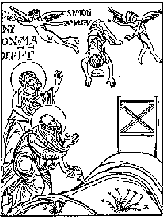




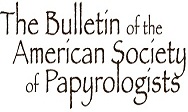
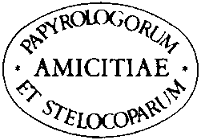
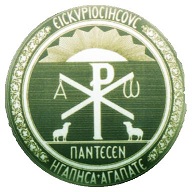





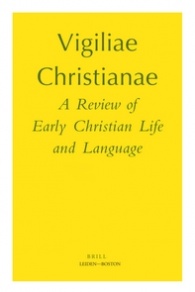






There are no reasons to believe that De incarnatione et contra Arianos has anything to do with Marcellus of Ancyra. Simonetti has shown this convincingly. Look by yourself and judge.
Pingback: Apocryphicity » Blog Archive » Developments in Coptic Apocrypha
Pingback: More Coptic Fragments from an Encomium on the Apostles (Ps-Severian of Gabala, Encomium in XII apostolos) | Alin Suciu